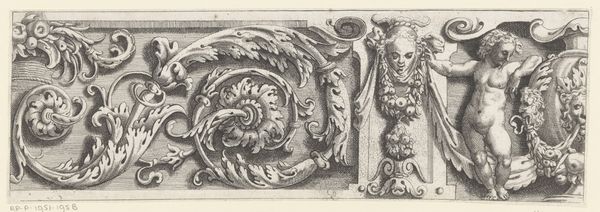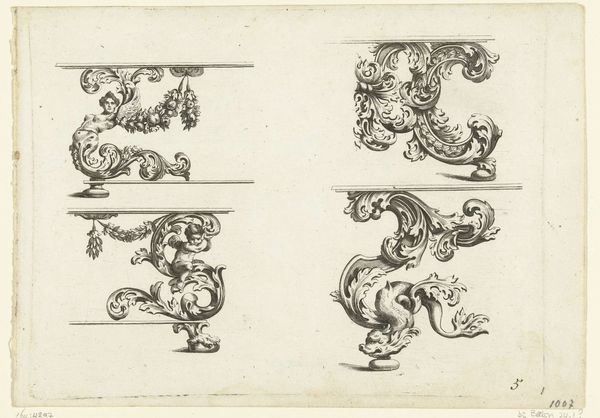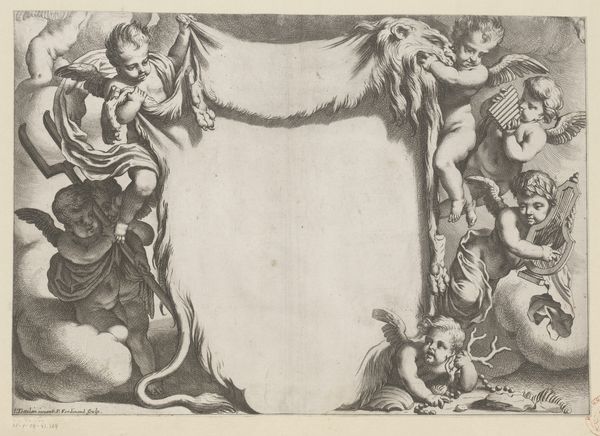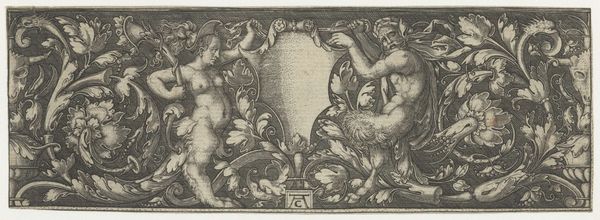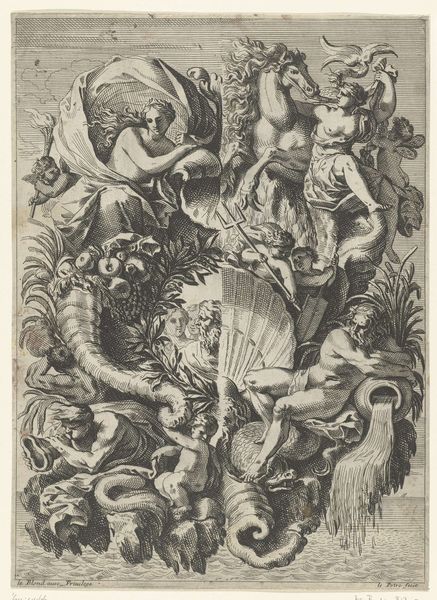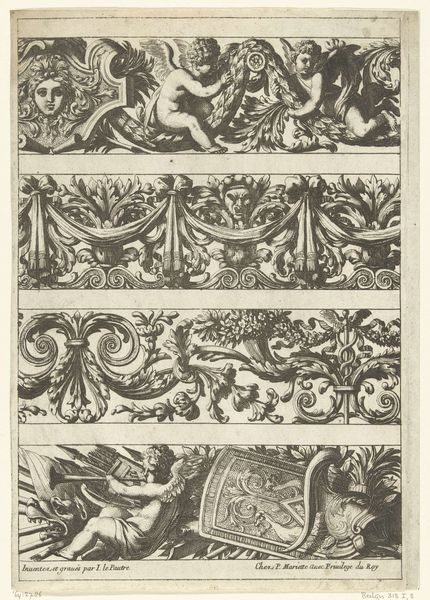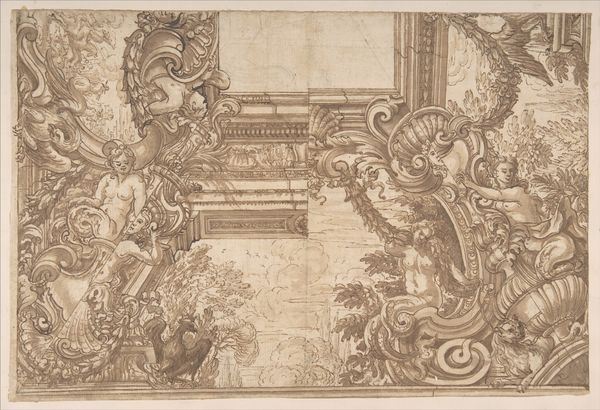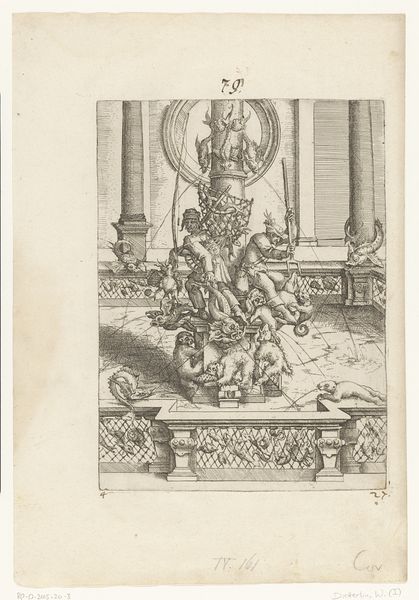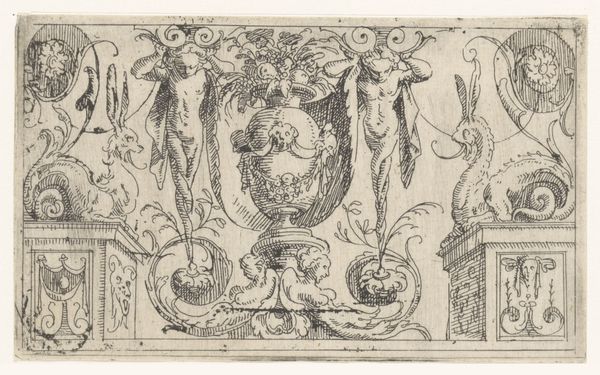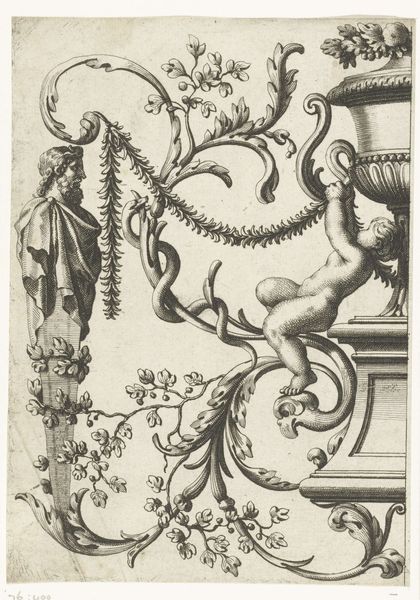
New Designs for Ornamenting and Embellishing Coaches and Carriages c. 1680 - 1701
0:00
0:00
drawing, ink, engraving
#
drawing
#
baroque
#
pen drawing
#
form
#
ink
#
line
#
decorative-art
#
engraving
Dimensions: height 169 mm, width 241 mm
Copyright: Rijks Museum: Open Domain
Curator: Looking at this detailed drawing, "New Designs for Ornamenting and Embellishing Coaches and Carriages," likely dating from around 1680 to 1701, I’m immediately struck by the artist's technical skill in rendering these intricate forms using only pen and ink. Editor: My first impression is that it's incredibly opulent. The level of detail, the almost overwhelming layering of ornamentation, gives a strong sense of baroque extravagance. It feels... dense. Curator: Dense indeed, and intentionally so. This work, currently held in the Rijksmuseum collection, exists as a blueprint, really, meant to guide artisans. The line work itself is meant to be descriptive. These are instructions; they represent labor. Editor: I agree about its instructional function, but there's also the pure formalism at play. Notice the balance achieved despite the asymmetry of each design. The play of light and shadow, created solely through line variation, adds a sculptural quality that elevates it beyond mere technical drawing. It is a composition built of forms. Curator: Absolutely, and thinking about the carriages that might have resulted from these designs, we can't ignore the social context. These carriages would have been potent symbols of status and wealth, objects of conspicuous consumption crafted for a specific elite class. The raw materials, the artisans' time, and ultimately the finished product itself speak volumes about 17th-century European society. Editor: You're drawing a line connecting ornamentation with social status, while I am also contemplating these floating components. The human figures and the lions give scale, creating rhythm, which really emphasizes their sculptural role. It seems like the intention is to not just produce a pretty object but evoke grandeur and power through pure visual means. Curator: Ultimately, the value of the piece lies, not just in what the drawing presents, but how it might come to life as this material object through design, labor, and craft in the late 17th-century. What do you think about that? Editor: What you see is something purely born of materiality; I feel that what stands out to me here is line as design; a balance and grandeur which speaks for itself, devoid of societal constraints. Regardless, the execution and skill in that hatching and decorative details create a statement for all of its Baroque opulence.
Comments
No comments
Be the first to comment and join the conversation on the ultimate creative platform.

